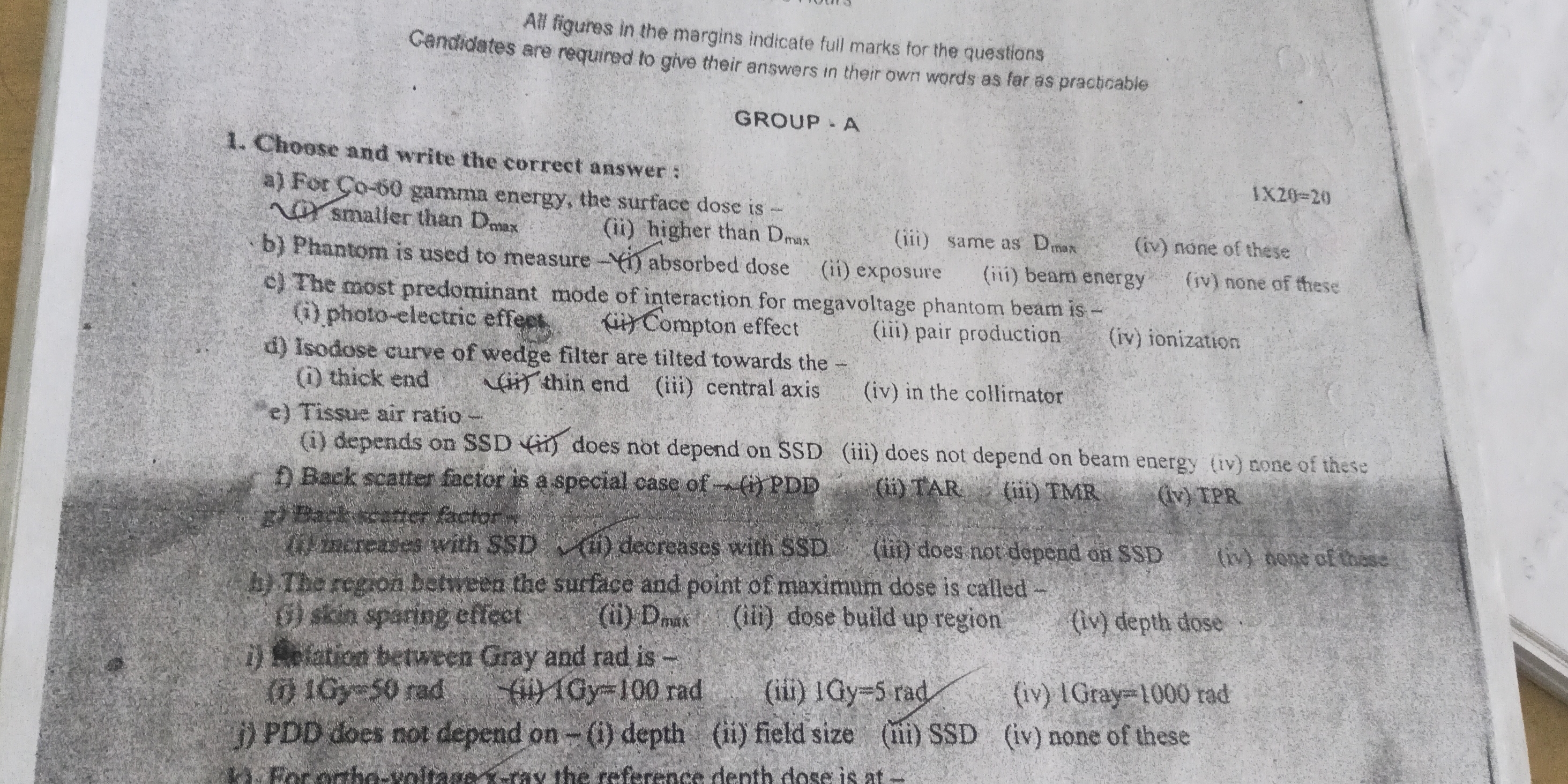1. Choose and write the correct answer: a) For Co-60 gamma energy, the surface dose is - (i) higher than Dmax (ii) smaller than Dmax (iii) same as Dmax (iv) none of these b) Phanto... 1. Choose and write the correct answer: a) For Co-60 gamma energy, the surface dose is - (i) higher than Dmax (ii) smaller than Dmax (iii) same as Dmax (iv) none of these b) Phantom is used to measure - (i) absorbed dose (ii) exposure (iii) beam energy (iv) none of these c) The most predominant mode of interaction for megavoltage phantom beam is - (i) photo-electric effect (ii) Compton effect (iii) pair production (iv) ionization d) Isodose curve of wedge filter are tilted towards the - (i) thick end (ii) thin end (iii) central axis (iv) in the collimator e) Tissue air ratio - (i) depends on SSD (ii) does not depend on SSD (iii) does not depend on beam energy (iv) none of these f) Back scatter factor - (i) increases with SSD (ii) decreases with SSD (iii) does not depend on SSD (iv) none of these g) The region between the surface and point of maximum dose is called - (i) Dmax (ii) dose build up region (iii) depth dose (iv) none of these h) Relation between Gray and rad is - (i) 1 Gy=100 rad (ii) 1 Gy=5 rad (iii) 1 Gy=50 rad (iv) none of these i) PDD does not depend on the reference depth. j) For ortho-voltage, 1 Gray=1000 rad.

Understand the Problem
The question is a set of multiple-choice questions related to radiation physics, specifically gamma energy and dosimetry concepts. It covers topics such as absorbed dose, isodose curves, and factors affecting tissue air ratio. The goal is to select the correct answer for each statement based on knowledge of the subject.
Answer
a) smaller than Dmax, b) absorbed dose, c) Compton effect, d) thin end, e) does not depend on SSD, f) does not depend on SSD, g) dose build up region, h) 1 Gy=100 rad.
a) smaller than Dmax, b) absorbed dose, c) Compton effect, d) thin end, e) does not depend on SSD, f) does not depend on SSD, g) dose build up region, h) 1 Gy=100 rad.
Answer for screen readers
a) smaller than Dmax, b) absorbed dose, c) Compton effect, d) thin end, e) does not depend on SSD, f) does not depend on SSD, g) dose build up region, h) 1 Gy=100 rad.
More Information
The surface dose in radiotherapy, especially with Co-60, is typically below Dmax due to build-up effects. Phantoms are essential for measuring absorbed dose to ensure accurate dosimetry. Gray and rad are units of radiation measurement, with 1 Gy equal to 100 rad.
Tips
Be careful not to confuse surface dose with the maximum dose. Understand the context of terms like Dmax and absorbed dose. Remember the unit conversions between Gy and rad.
Sources
AI-generated content may contain errors. Please verify critical information